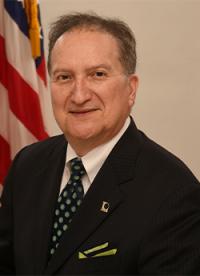AHRQ Views: Blog posts from AHRQ leaders
When It Comes to High-Quality Healthcare, Diagnostic Safety Tops the List
MAR
12
2024
As we celebrate Patient Safety Awareness Week 2024, AHRQ again places particular emphasis on an aspect of healthcare delivery increasingly recognized as essential to high-quality care: timely and accurate diagnosis.

Most people will experience at least one diagnostic error in their lifetime, sometimes with devastating consequences. AHRQ is committed to improving the consumer’s experience with healthcare and making this a rare event. Earlier this year, a study funded by AHRQ published in BMJ Quality & Safety estimated that 795,000 Americans become permanently disabled or die annually due to disease misdiagnoses.
Another recent analysis in JAMA Internal Medicine estimated that 23 percent of patients treated at 29 academic medical centers in the U.S. experienced a diagnostic error. Among those patients, about 18 percent of errors caused temporary harm, permanent harm, or death.
The urgent need to reduce these errors—which include diagnoses that are either inaccurate, delayed, or not communicated to the patient—has fueled AHRQ’s growing commitment to advancing diagnostic safety, including investing in focused research and tools such as:
- Ten Diagnostic Safety Centers of Excellence are working to better characterize, understand, and measure diagnostic errors and develop new approaches to reducing them.
- AHRQ’s expanded suite of diagnostic safety issue briefs addresses diverse topics such as improving diagnosis in pediatric care, how to best learn from patient experiences, how diagnostic errors contribute to maternal morbidity and mortality, and reinforcing the role of nurses in diagnostic safety.
- Nearly a dozen AHRQ-funded tools are available to help clinicians and their teams improve diagnostic safety. The TeamSTEPPS® training program recently released a new curriculum to help clinical teams improve communication for safer, more accurate, and timely diagnoses in all healthcare settings.
These resources and others reflect contemporary efforts to advance the art and science of diagnosis. In the last half-century, we have moved beyond the assumption that diagnostic errors are largely unavoidable due to the complexities of disease and medical practice.
In 2015, the National Academies of Sciences, Engineering and Medicine (NASEM) published Improving Diagnosis in Health Care, which concluded that urgent change was needed to address diagnostic errors that persist throughout all care settings, involve common and rare diseases, and continue to harm an unacceptable number of patients.

The NASEM report proposed that the diagnostic pathway be explored in six areas: patient and family engagement; healthcare professional education and training; health information technology; identification, analysis, and reduction of diagnostic errors; work system improvements; and impacts of external environments.
Momentum is growing to confront these challenges. AHRQ leads this care transformation as demonstrated by Agency-funded research teams that have published essential insights into areas such as diagnostic error detection, the frequency and consequences of delayed diagnoses, and ways that healthcare environments can modify risks:
- Researchers focusing on the importance of involving patients and families published an article in BMJ Quality & Safety that showed a “patient-reported diagnostic process-related breakdowns” framework can help organizations learn from mistakes by effectively categorizing contributors to misdiagnosis —such as misunderstanding patient symptoms, outdated test results, and miscommunication.
- Delays in diagnosis are increasingly recognized as a significant source of morbidity and mortality but are challenging to measure. AHRQ-funded research published in BMC Medical Informatics and Decision Making described how administrative and other data sources can identify diagnostic delays for various diseases.
- In a study aimed at improving stroke diagnosis in emergency departments, researchers showed that machine learning was able to identify that 31 percent of patients had a missed or potentially missed opportunity for a stroke diagnosis.
These findings and others complement the research and collaboration underway by AHRQ’s Diagnostic Centers of Excellence. They underscore the imperative to mitigate diagnostic errors and harm. As we advance, AHRQ will continue investing in this underappreciated healthcare practice and research area.
Dr. Valdez is the director of AHRQ. Dr. Raab is a medical officer in the Agency’s Center for Quality Improvement and Patient Safety.
Get more AHRQ news, sign up for AHRQ news via email and follow AHRQ on Twitter, LinkedIn, Facebook, and YouTube.



